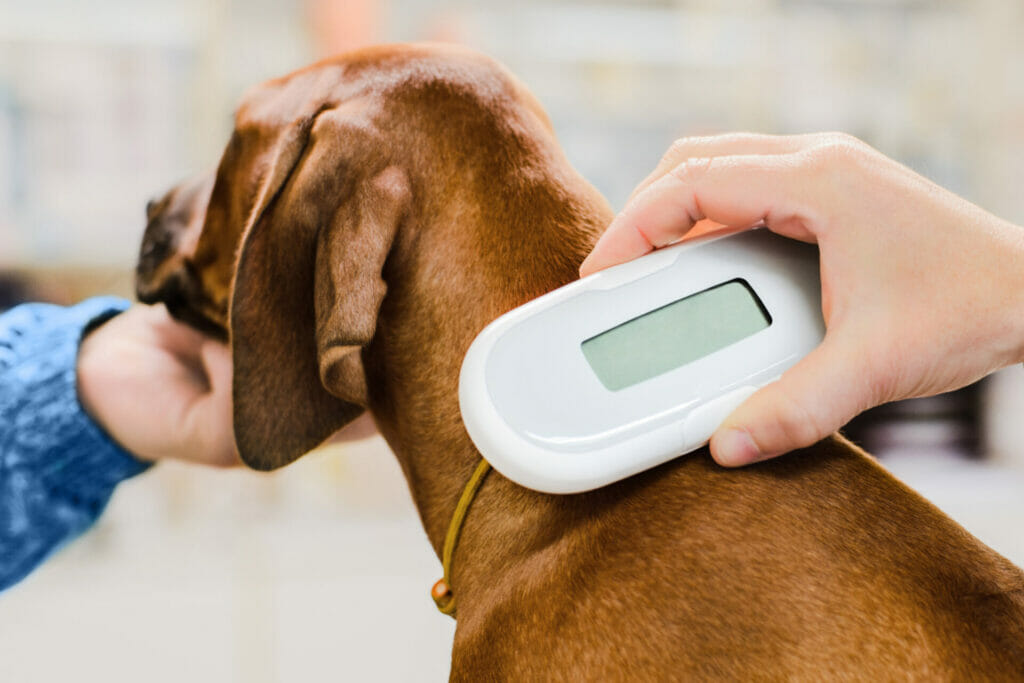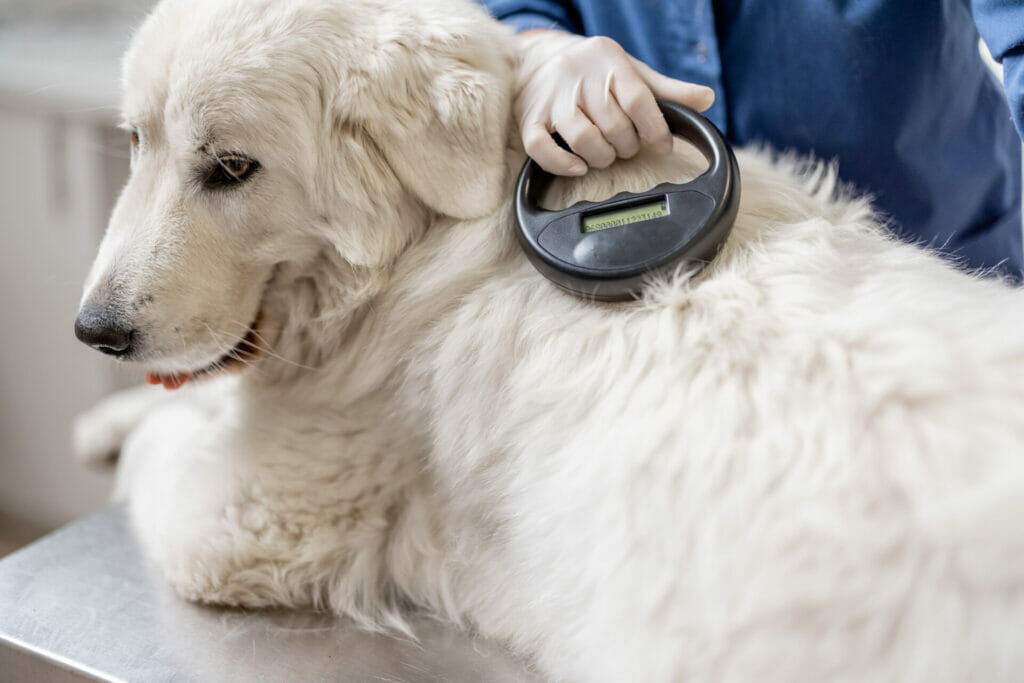Is your dog microchipped? Microchipping has become a fast, easy, and popular way to give your permanent dog identification. Microchipping doesn’t take the place of making sure your dog is wearing identification tags; however, it’s also an essential piece of the puzzle for making sure that you give your dog the best chance possible of reuniting with you if they were to ever become lost or separated from you.
What are microchips?
Microchips have become a standard safety precaution to help lost dogs reunite with their owners. Microchips are small data-holding devices approximately the size of a grain of rice. A vet injects the microchip with minimal discomfort between a dog’s shoulders. Each microchip has a unique number associated with it which is what comes up within it scanned by a vet or shelter. That unique microchip number can then be looked up in a database and is connected to the dog owner’s contact information. This can help get the lost dog reunited with their family. Microchips are inexpensive, and many communities offer free or reduced-cost microchip days for low-income community members. In addition, many rescues, shelters, and breeders microchip all the dogs or puppies in their care before they go to their new families.
Getting your dog home
The most significant benefit of microchipping your dog is that it makes it far more likely that if your dog gets lost, they can be returned to you. If your dog goes missing, you want to make it as easy as possible for someone to find out who your dog belongs to.
In addition to identification tags, the best tool we have for helping to reunite lost dogs with their families is to make sure that dogs are microchipped. A recent study showed that dogs who are microchipped are more likely to be returned to their owners than dogs who are lost but do not have a microchip.

At a boarding kennel, dogs are cared for by kennel staff and brought out for walks or playtime a few times per day but otherwise spend most of their time in kennel runs. The types of care and services available at a boarding kennel will differ depending on the facility, amenities, etc. Some boarding kennels have dog trainers on staff and may also provide training opportunities to dogs staying at boarding kennels.
It can’t fall off
It’s a good idea for dogs to always wear a collar and identification tags, but ID tags aren’t the only way that your dog could be identified. If your dog’s collar were to be removed or fall off, there goes the identification tags and the ability for someone who finds your lost dog to get them home.
The primary benefit of having your dog microchipped is that, unlike other common forms of identification, a microchip isn’t something your dog wears. Instead, a microchip is something that is injected into your dog and stays with them regardless of if they have a collar on or not.
Dognapping victims
Unfortunately, as the demand for dogs, especially of popular breeds, increases, so does the risk of dognapping. If a dog is stolen, a collar and ID tags can be removed. However, a microchip stays permanently in your dog’s body. This means that even if a dog is stolen, and then sold to new owners, when inevitably your dog is brought to a vet clinic; the microchip will be discovered. When the dog’s microchip is scanned, it will be your contact information that comes up, which increases the likelihood your dog could be returned to you.

Easy to scan
If your dog is lost and then found by a stranger, they should be brought to a shelter or local animal control. At that point, your dog should be scanned, and your information would come up on the contact information with the microchip. The microchips are read by a microchip scanner being passed over your dog’s body. Microchips are so effective because they are easy and quick to can. The scanner allows a vet, shelter, or another rescuer to access the microchip’s number.
With that number, they will be able to gain access to your contact information to notify you that your dog has been found. It is standard practice for vet clinics, shelters, and animal control agencies to immediately scan dogs for a microchip when a dog has been found and brought in.
Instantly updatable
If you move frequently, it can be frustrating and expensive to always update your dog’s ID tags. A benefit of microchipping is you can instantly update your contact information with a microchip by calling or going online and logging into the company that produced your dog’s microchip.
Microchips are not the same as GPS trackers. Microchips don’t tell us where our dogs are located if they are lost; instead, when scanned, they tell the rescuer, vet, or shelter who your dog belongs to so that you can be contacted. Because it’s impossible to track a dog via their microchip, the only way microchips can help get your dog home is if the information associated with the microchip is updated and accurate. If you move to a new house or get a new phone number, one of the first things you do is to update your contact information with the company that produced the microchip your dog has.




















